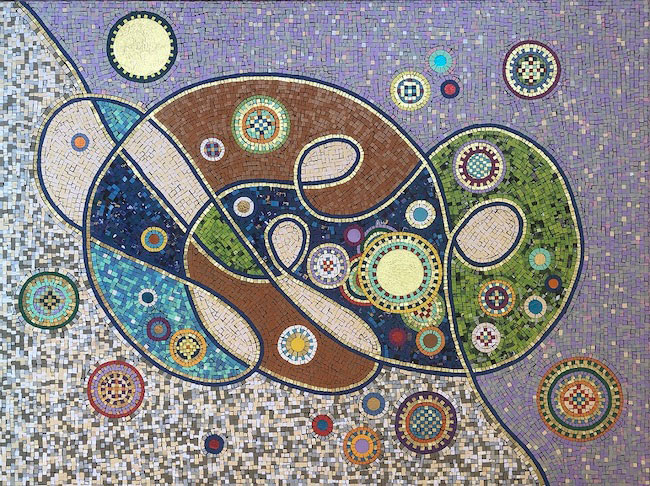The art of mosaic has belonged to man from time immemorial, since the earliest times there have been testimonies of how this expressive manifestation has been fundamental in the daily life of great civilizations that did not give up beauty and storytelling through images within their homes. Today’s leading artist has been able to model the mosaic to create his own creative form of great emotional impact.
Giampiero Arabia was trained at the Liceo Artistico in Cosenza, even though he had been living in Germany for many years, precisely in Aachen, and from that moment his career was inextricably linked to art in all its forms: from painting to mosaics, from sculpture to jewellery, from stained-glass windows to collages, all trials that allowed him thereafter to move from one style to another according to the message he wants to communicate when he is preparing to create a work. During his long career he has created monumental mosaics – the presbytery of the Cathedral of Havana in Cuba and the presbytery of the Church of St. Luke the Evangelist with about 300 square meters of mosaics – commissioned by public bodies of international importance, the Vatican – in the Chapel of the Bishops of the Lateran Palace there is a work of his performed in 2013 – and also by museums, including the Museum of the Present in Rende, that want to give particular emphasis to large surfaces through a technique uncommon and that requires great skill and dedication to be made. In the current creative phase Arabia chooses a figurative language in which he mixes the mosaic tiles with the painting, to emphasize his predisposition to stylistic contamination that enriches the individual techniques to harmonize them and expand the expressive possibilities. Also about figuration, he seems to want to be a middle ground towards abstraction, where the flowers, vortexes, lines and signs it enriches are fundamental to narrate the inner sensation he chooses to make become protagonist of the work.
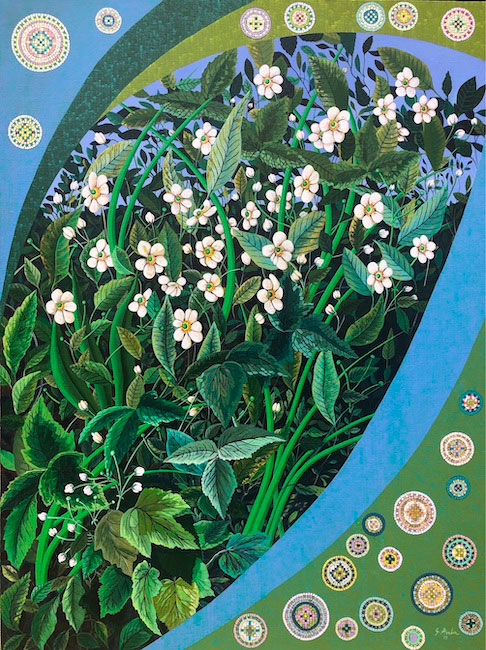
The mosaic has its roots in ancient times, the very first forms appear inside Sumerian houses, to protect the walls in raw bricks and make the floors more impermeable thanks to the use of glazed clay, then, in ancient Rome, Greece and Egypt, the small cubes of marble, onyx and various stones, will be cut into the shape of tiles taking on the ornamental value of walls and floors of which history has left traces until the present day. From the splendour of the past, when glass tiles enriched with gold and silver were also used, the mosaic technique has been able to update and evolve, even in the twentieth century, a time of great revolutions that also included and involved art, when it became the expressive basis of Art Nouveau and Art Deco, as well as Catalan Modernism, especially for the great works made by Antoni Gaudi with this technique, and Viennese Secessionism with its major representative Gustav Klimt. Giampiero Arabia‘s works leave the previous schemes and choose to narrate the intensity of emotions through a more abstract voice, more expressionist but at the same time measured, calm, even when he tells of sensations that can normally give rise to destabilization or contrast, in him comes out clearly a form of balance, of comparison, with himself or with the other, constructive, aimed at achieving a greater awareness, a higher consciousness by virtue of having accepted the previous doubt.
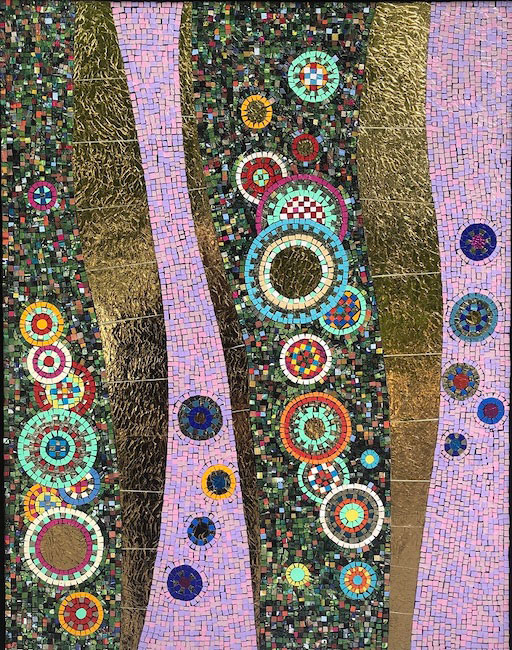
Works such as Dialogo (Dialogue) clearly express the need inherent in the nature of Arabia, to be in a position of listening, of opening, a position that the artist manifests through the pastel shades of the two main structures, through the richness of the gold leaf that tells the importance of communication between two different points of view, through the circular forms that emerge as if they were the words of a harmonious, balanced, serene speech.
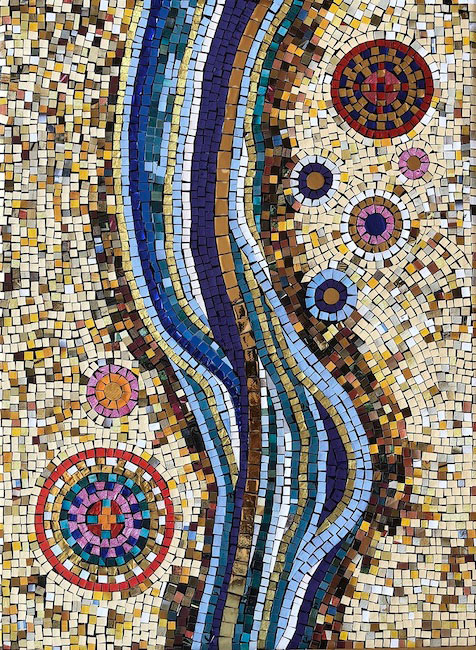
O Die Quelle des Lebens (The source of life), where the tesserae succeed in instilling in the observer the sense of perpetual movement, that flow that crosses the existence of each one and that determines the changes and modifications necessary to its very essence; this work is one of those strongly and indissolubly linked to the mosaic, that Arabia juggles, being able to transform a material that is not mobile and ductile.
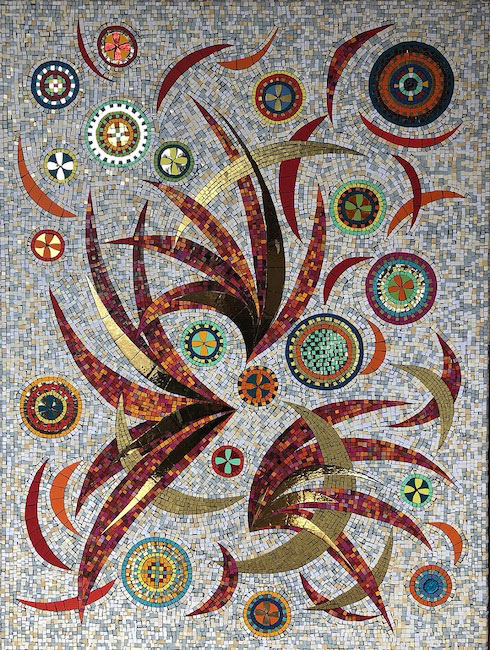
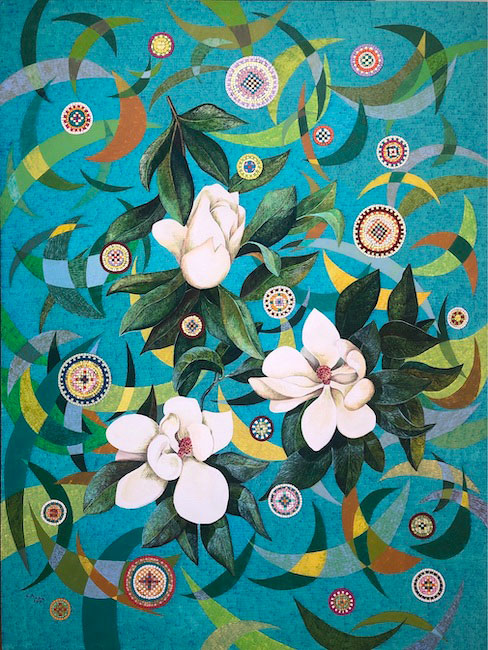
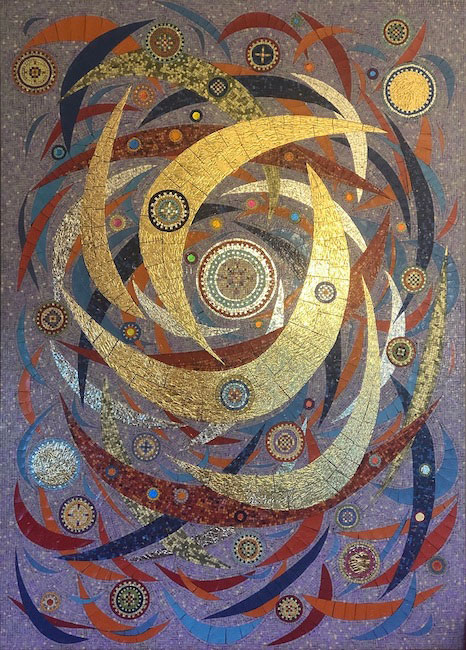
Then in the work La danza numero 3 (Dance number3), Ich erinnere mich an clelia (Remembering Clelia) and Vortice (Vortex), he feels the need to give more space to painting, through traits that are sometimes more figurative, sometimes more abstract, but still the basis for telling his thoughts, for narrating his interiority, for talking about a memory associated with a fragment of emotion of the past that still remains alive in his memory and cannot but be imprinted on the canvas. In these works the tesserae become accompaniment, detail that gives more body and emphasis to the expressionist whole at the base of these works that are then enriched by the essential pieces that characterize his art. From some years Giampiero Arabia has chosen to use plastic and paper to compose the tiles, which then become splendid parts of an harmonious, magical whole, thanks to his skilful hands, thus giving new life to materials that would otherwise be destined to end the course of their life cycle. A great artist, symbol of an uncommon technique, yet able to fascinate thanks to his ability to bind himself to the most remote past while actualizing himself in contemporary figuration.
GIAMPIERO ARABIA-CONTATTI
Email: giampiero.arabia@libero.it
Facebook: https://www.facebook.com/dongiampi.arabia


